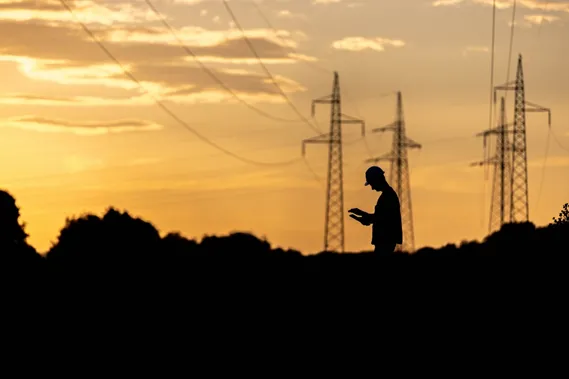
In order for a light to come on every time we press the switch, electricity must travel from generation plants to distribution points, for subsequent consumption by society. This journey is made through the high-voltage power lines that make up the Spanish electricity system managed by Red Eléctrica, the Redeia company in charge of electricity transport and operation.
Under this role, Red Eléctrica is responsible for the transmission grid assets design, construction and maintenance, both on the peninsula and islands, such as electricity substations and power lines, which can be underground or aerial (suspended in the air and supported by transmission towers). In our country there are nearly 47,000 kilometres of aerial power line circuits due to their orienting and laying capablities, but this reality means a challenge in other areas, such as guaranteeing the safety of the technicians who carry out maintenance work on high-voltage lines.
In many of the cases in which an inspection or intervention is required, these professionals must execute the so called "work at height", which is defined as an activity to be carried out at heights greater than 2 metres above ground level or more than 3.5 metres in height, in which there is a risk of a fall. This vital work requires prior specialised training in order to be able to operate properly according to established procedures, which may involve potential risks each time it is performed, such as fatigue.
Aware of its importance, Redeia's 2021-2025 Strategic Plan targets increasing the safety and well-being of its employees, and the need arises for a tool to improve the conditions in which work is carried out on high-voltage power lines, taking into account the following points:
- It must be a light and non-intrusive tool: as the work already requires a physical effort on the part of the technicians, the solution cannot be an additional difficulty.
- It must respect the technician's privacy: all technicians are professionals and respecting their privacy in the work environment is a point of great importance for the company.
Taking these two points into consideration, the IN-SURE project was born, a collaboration between Elewit, Red Eléctrica y Advanced Optical Systems S.L. This project is an IOT solution for the monitoring of tools commonly used in work at heights to increase safety in this activity.
What is IN-SURE?
Although the detection and prevention of fatigue is a must in this type of work, there may be situations when it goes unnoticed. Therefore, it is necessary for any fully procedural work at height, to warn of abnormal situations during their execution.
In order to achieve this, a small sensor, about the size of a coin, is attached to commonly used tools to identify whether the position of the tool during execution is correct. Assuming a technician is climbing to the top of a high-tension support, the device could help, for example, to detect whether the harnesses are properly positioned during the work. If they are not, a warning would be given, and all through a tool that does not involve any additional weight or complications for the professional.
How does the project contribute to the energy transition?
In the current context of grid development, in order to optimise our country's renewable potential and improve electricity supply, it is essential to research and study tools that allow us to make the most of all the talent of our professionals, guaranteeing their safety and well-being.
In this sense, as new generation and distribution agents are added to the transmission grid, it will be necessary to establish new tools to ensure the security of the procedures to be carried out more frequently.
What is the project’s current status?
IN-SURE is currently at the stage of component and/or systems validation in laboratory environments. In the first minimum viable product (MVP), algorithms were implemented on small sensors to detect the state of safety elements and the height of people working at heights.
For this PMV, the system has been provided with high-level applications that provide a dashboard and a record of the events and alarms. In addition, the system has been provided with several operators monitoring capabilities.
The objective is to be able to carry out a real test in a controlled environment to validate the developed functionalities and to establish a roadmap in the medium and long term to in order to prove the the proper functioning of the prototype in a real environment.